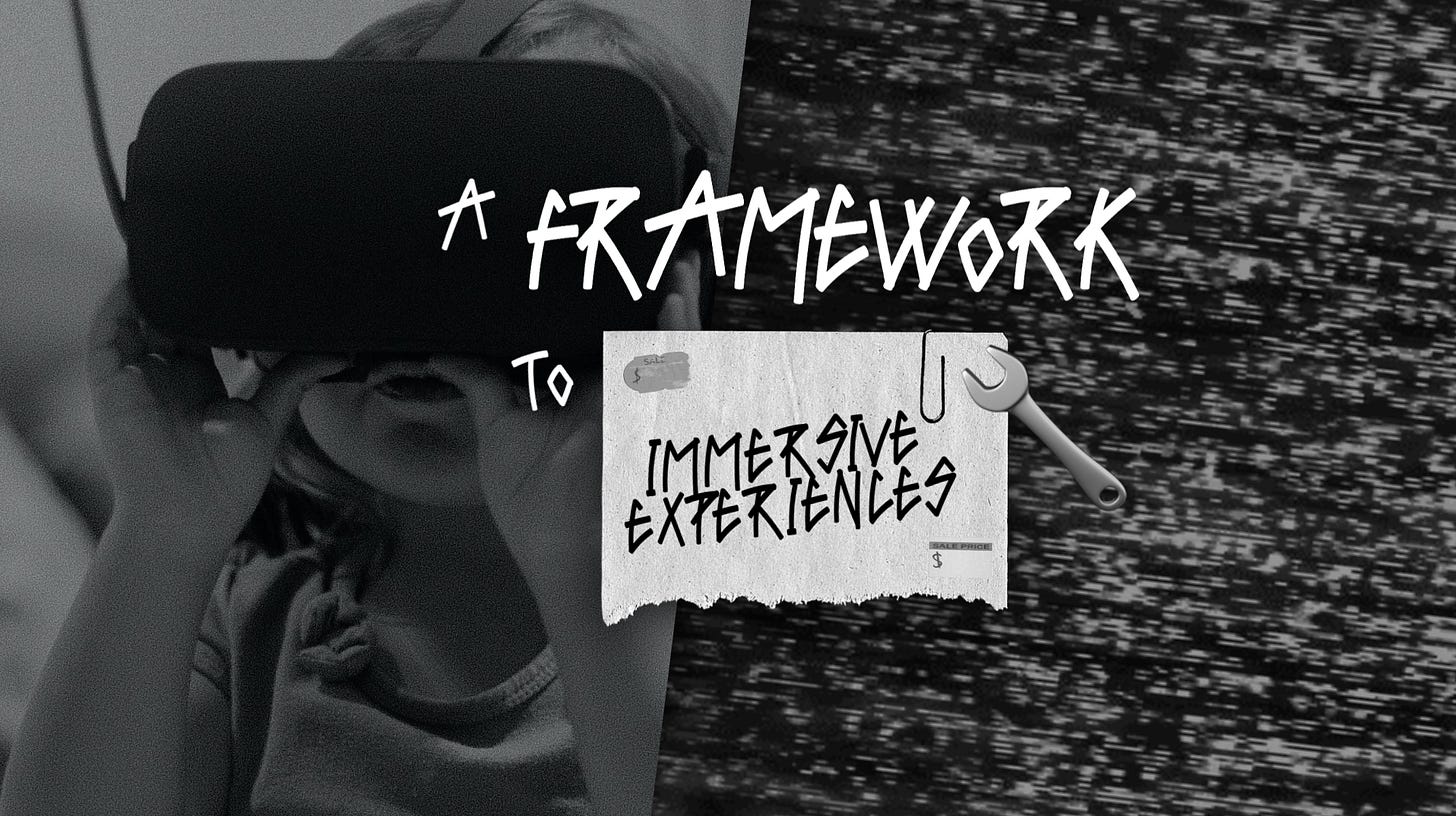Beyond VR & The Metaverse: A_Framework_To: Immersive Experiences
A_FRAMEWORK_TO is a 3-Part series exploring the role of frameworks in breaking down complex cultural concepts to its parts.
As technological advances compound, VR remains a central — but unfortunate — talking point and symbolic artifact within the Immersive Experience discussion.
But if we’re going all in with immersive experiences for entertainment, work…


